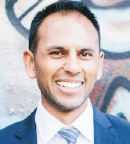
Gordon D. Schiff, MD

Andrea J. Lim

Sumit Agarwal, MD

Sevan M. Dulgarian

Lynn A. Volk, MHS
Although diagnostic errors date back to antiquity, in recent years, they have begun to receive attention as an important patient safety issue. This culminated in the National Academy of Medicine’s 2015 landmark report, which concluded that most people in the United States would experience at least one diagnostic error in their lifetime.1 Diagnostic errors are the leading cause of medical malpractice claims, and cancer is the most frequently missed or delayed diagnosis.
Clinicians have been urged to use -resources more “wisely” through various campaigns and guidelines that issue recommendations discouraging the indiscriminate use of screening tests lest they lead to cascades of harm.2-5 How to achieve a better “balance” between overdiagnosis—making diagnoses that do not help patients (including cancers that would never have caused clinical problems)—and underdiagnosis (especially missing cancer in its earlier and potentially more treatable stages) has been the subject of numerous commentaries and studies.6
10 Patient-Centered Principles for More Conservative Cancer Diagnosis
1. Promote a model for enhanced listening to and caring for patients
2. Develop a new science to better operationalize and communicate clinical uncertainties
3. Rethink symptoms and recognize that many are unexplained, self-limited, and can benefit more from care-full approaches than indiscriminate testing
4. Maximize continuity and trust to ensure clinicians know their patients, and patients can trust their advice as knowledgeable, caring, and nonconflicted
5. Allow time to ensure adequate encounter and follow-up, along with reliable, well-crafted watchful waiting
6. Link diagnosis to treatment to ensure testing is appropriately and strategically tied and timed to where it matters most for therapy
7. Order and interpret tests more thoughtfully to avoid false-positives, overdiagnosis, and a myriad of harms from testing
8. Incorporate lessons from diagnostic errors that recognize bona fide diagnosis red flags, critical diagnoses, and pitfalls, thereby permitting safely being conservative in other circumstances
9. Address the fears, myths, and challenges of cancer, including cautious, skeptical approaches to screening and testing that lack evidence of benefit and potential for harm
10. Transform the role of specialists and emergency departments from contributing to the problem of nonconservative diagnosis and overutilization to functioning as experts, guiding patients and other clinicians toward more judicious care
Adapted from Schiff GD et al.7
Some have framed this need to strike a better balance as trying to ensure that the pendulum does not swing too far in either direction (ie, toward underdiagnosis vs overdiagnosis) and aiming for the optimal midpoint. Instead, we argue that these phenomena are actually two sides of the same coin. Thus, rather than a series of “trade-offs” between too much vs too little diagnostic testing and referrals, we need an entirely different approach—one based on a new set of principles that can ultimately lead to more “care-full” and conservative approaches to diagnosis.
To that end, we recently assembled an international panel of clinicians, educators, health policy experts, and communication specialists to develop principles of conservative diagnosis. We published these recommendations (along with a longer white paper7) to serve as broad but practical recommendations for providers, policymakers, and patients (see sidebar).
Developing New Ways of Working With Patients
At the heart of medicine lies the foundational patient-provider relationship. As the speed of technologic and biochemical advancements accelerates, providers increasingly rely on imaging and lab results to determine a diagnosis, often shortchanging history-gathering and physical examination. Patients also have access to a growing number of diagnostic technologies and apps, which can have the effect of increasing the discovery of patient “risk factors” and incidental findings. Rather than decreasing diagnostic uncertainty and patients’ fears, these technologies compound and complicate them.
When we can work with rather than on patients to jointly produce an assessment and plan for their concerns, a path toward better care continuity can begin to emerge.— Gordon D. Schiff, MD, and colleagues
Tweet this quote
We therefore need to develop a new science of diagnostic uncertainty—one that recognizes how often patients’ symptoms defy an exact diagnosis and supports clinicians’ ability to follow patients over time. This would allow clinicians over time to monitor whether patients’ symptoms resolve (as they often do) or evolve in other directions (which might indicate whether more testing might be helpful). The patient-provider relationship must involve candid and transparent communication about uncertainties, including “medically unexplained symptoms”—a label that often leaves patients feeling dismissed or stigmatized. When we can work with rather than on patients to jointly produce an assessment and plan for their concerns, a path toward better care continuity can begin to emerge, thereby encouraging follow-up and health maintenance.
Addressing Cancer Fears and Overdiagnosis Worries
As readers of this article will readily attest, one diagnosis that epitomizes many of the fears, complexities, and nuances involved in the diagnostic process is cancer. Virtually any symptom can be caused by cancer, and cancer can present with a myriad of symptoms that may initially be nonspecific, causing them to be overlooked or dismissed.
The media and medical communities have helped fuel these fears by promoting the paradigm that early detection of cancer is life-saving and the only way to avoid cancer’s dreaded complications. When we were preparing the 10 Principles White Paper, we were surprised to find that as we searched the literature for a table comprehensively listing the types of potential harms resulting from diagnostic efforts that
Conservative diagnostic stewardship on the part of the oncology community is a paradigm whose time has come.— Gordon D. Schiff, MD, and colleagues
Tweet this quote
should be considered, none had been published. More recently, an excellent conceptual map of the harmful consequences of overuse of tests and treatments was published by Korenstein and associates.8 Many of these potential harms seem obvious in evaluating patients for any diagnosis and are important to share with patients, but we suspect they are rarely weighed adequately by clinicians trying to “rule out” cancer. On a population basis, these harms can greatly outweigh the potential benefits of diagnosing a few cancers that may or may not benefit from early diagnosis and/or treatment. Although this approach of more careful screening inevitably implies that some patients’ cancer diagnoses may be delayed, scores or even thousands of patients will be spared misguided and potentially harmful diagnostic efforts.
This map nicely illustrates the types of harms we also outlined, but most interesting is the fact that the lead authors work at a cancer center. Clearly, cancer is a helpful lens through which to visualize and be reminded of the multifaceted potential harms of what may occur in medicine in general and oncology in particular.
Redefining Conservative Diagnostic Stewardship in Oncology
Screening programs intuitively seem to be a good idea for detecting cancer in its earliest stages, but the burden of proof to demonstrate that these programs do more good than harm should rest with proponents of such programs. Diagnosing more cancers in their early stages should not automatically be equated with saving lives, reducing morbidity, or improving patients’ quality of life. Many oncologists and clinicians are familiar with concepts such as lead-time bias, length bias, stage migration, overdiagnosis, and the need to account for false-positives and positive predictive values of diagnostic tests. However, many clinicians do not, and the general public often fails to understand these concepts, their statistical implications, and, more perniciously, their clinical ramifications. Oncologists need redefined roles and skills in educating, as well as supporting, their patients and the general public in navigating the fears surrounding cancer. For the oncology community, conservative diagnosis and diagnostic stewardship is a paradigm whose time has come. ■
Ms. Lim is Research Assistant, Division of General Internal Medicine, Brigham and Women’s Hospital and MD/MPH Candidate, Tufts University School of Medicine. Dr. Agarwal is a clinical research fellow and primary care physician at Brigham and Women’s Hospital. Ms. Dulgarian is Research Assistant, Division of General Internal Medicine, Brigham and Women’s Hospital. Ms. Volk is Associate Director, Clinical and Quality Analysis Department, Partners Healthcare System’s Information Services, Boston. Dr. Schiff is Associate Director, Center for Patient Safety Research and Practice, Division of General Internal Medicine, Brigham and Women’s Hospital; Associate Professor of Medicine, Harvard Medical School; Quality and Safety Director, Harvard Medical School Center for Primary Care, Boston.
DISCLOSURE: Ms. Lim and Dr. Agarwal reported no conflicts of interest. Ms. Dulgarian has an immediate famly member who is employed by and has received travel/accommodations/expenses from Zoll Medical. Ms. Volk has received institutional research funding from MedAware, Ltd. and MediSeen eHealth Ltd. Dr. Schiff has received institutional research funding from MedAware Ltd.
Disclaimer: This commentary represents the views of the author and may not necessarily reflect the views of ASCO or The ASCO Post.
REFERENCES
2. Cassel CK, Guest JA: Choosing wisely: Helping physicians and patients make smart decisions about their care. JAMA 307:1801-1802, 2012.
3. Levinson W, Kallewaard M, Bhatia RS, et al: ‘Choosing Wisely’: A growing international campaign. BMJ Qual Saf24:167-174, 2015.
4. Rosenberg A, Agiro A, Gottlieb M, et al: Early trends among seven recommendations from the Choosing Wisely campaign. JAMA Intern Med 175:1913-1920, 2015.
5. Wolfson D, Santa J, Slass L: Engaging physicians and consumers in conversations about treatment overuse and waste: A short history of the choosing wisely campaign. Acad Med 89:990-995, 2014.
6. Laine C: High-value testing begins with a few simple questions. Ann Intern Med 156:162-163, 2012.
7. Schiff GD, Martin SA, Eidelman D, et al: Ten principles for more conservative, care-full diagnosis. Available at www.patientsafetyresearch.org/Schiff_Ten_Principles_Conservative_Diagnosis.pdf. Accessed February 20, 2019.
8. Korenstein D, Chimonas S, Barrow B, et al: Development of a conceptual map of negative consequences for patients of overuse of medical tests and treatments. JAMA Intern Med 178:1401-1407, 2018.

